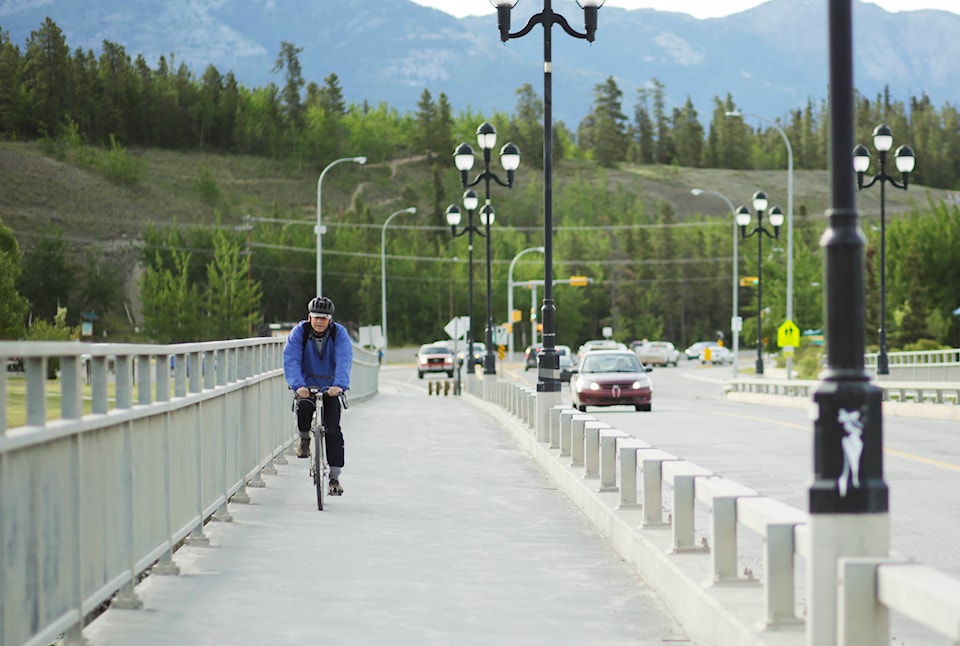If you build it, they will come — that’s what Sabine Schweiger says about cycling infrastructure in the city of Whitehorse. The hope now, she says, is that the paths and priorities outlined in the city’s new bicycle network plan will bring even more bikes to the road.
The plan, which will be presented to council May 28, was developed in 2017 in tandem with the downtown and Marwell plans. It brings together feedback from 238 online respondents, members of the Whitehorse Urban Cycling Committee, and city staff.
It includes short-term plans for the next one to five years and long-term projects.
Among the priorities identified, says Schweiger, environmental coordinator with the city, are improvements to existing infrastructure, particularly trail connections between downtown routes.
“It’s not a huge surprise,” she says of the routes riders have identified as key. “It really mirrors the commuter cycling map that’s been published for years with the city.”
She says riders want to see the trail gap filled between Two Mile Hill and the waterfront, upgraded intersections (possibly including protected traffic signals and pavement markings), and changes to the way cycling paths are marked in the city.
“One of the things we really struggle with in the Yukon is that painted line,” Schweiger says, especially in the winter. “Even if it’s there under the snow, it’s not there.”
At this point, the plan doesn’t go into specifics about what should be done when it comes to separating bike lines from traffic, but Schweiger says there are a number of options.
These include concrete barriers and bollards, locating cycling lanes up on a curb to create a height difference, or arranging parking spaces so there’s a row of parked cars between bikes and cars that are moving.
All of these, she says, are measures that will hopefully make people feel safer about cycling in the city, which should, in turn, get more people on bikes.
According to past statistics included in the plan, the number of residents who rely on cycling as their primary mode of transportation increased from two per cent in 2001 to 3.2 per cent in 2011. Right in the middle of that growth spurt was 2005, when the city installed its first on-street bike lanes.
Schweiger also highlights the increase in ridership along the Millennium Trail after it was fully paved, following the 2004 transportation showcase. People used the path when it was dirt. Now though, she calls it a “premier recreational facility.”
As well, there’s been growth in the popularity of riding fat bikes in the winter, which has led the city to change maintenance policies around snow clearing on Two Mile Hill and the waterfront trail.
The plan will be presented to mayor and council on May 28. The administrative recommendation is for council to adopt it as a guiding document, says Schweiger.
Contact Amy Kenny at amy.kenny@yukon-news.com
